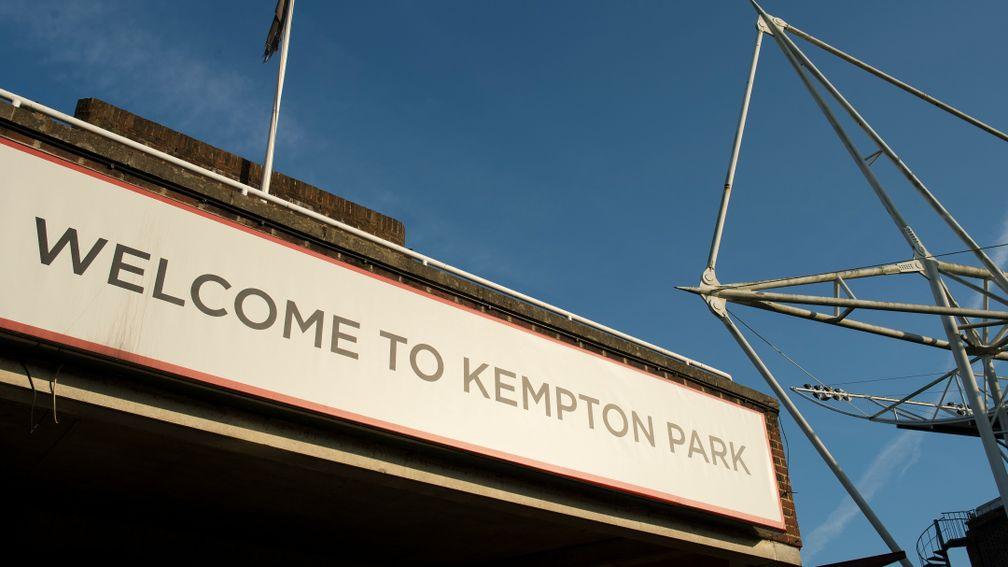An eye-opening exploration of the unseen areas of Kempton Park

Newton Abbot abandoned, waterlogged, while at Kempton they are watering. Instead of leaving Europe we should apply to relocate Britain to somewhere in the middle of a land mass - Slovakia, perhaps, or Kansas - where the weather is more settled and predictable.
Last week, thanks to the initiative of Sir Mark Prescott and the helpfulness and hospitality of Kempton Park, a select (well, small anyway) group were able to explore the non-racecourse part of Kempton Park.
It was an eye-opener on several fronts. Armed with an 1875 map of the Estate it was fascinating trying to locate landmarks from the period, including the site of the house once occupied by Samuel Henry Hyde, the founder of the racecourse, which held its first race meeting in 1878.
There were stretches of the running rail that once bordered the Jubilee course and evidence of the sprint track with its abrupt pull-up that tested jockeys' nerves.
Yet, with current plans for the Estate in mind, what struck me most forcefully was the sheer size of the park and woodland that lies unseen, unused and, except by Estate workers, largely unvisited. Hidden from the sight of racegoers, most of the 373 acre site is another world.
It again prompts the question, does the racecourse have to be closed in order to make a housing development, whether desirable or not, viable?
But I digress. Whatever Kempton's Tuesday fixture offers it isn't lavish prize money. No race is worth more than £4,549 to the winner and the day's most valuable race is at Southwell, with £7,159 for the winner of the Class 3 handicap, for which there are only five runners.
So let's focus on happier sights. There's General Tufto, of course, running for the 196th time and attempting to win for the 16th time at Southwell (3.50). Go on! Then there's Derek Shaw's trio - Treaty Of Rome (2.10), Tartufo Classico (2.40) and Borough Boy (4.55).
Shaw, a former jump jockey, has been sending out a stream of winners of invariably modest ability for 25 years but, now based at Sproxton in Leicestershire, he is enjoying a proverbial purple patch.
Last Wednesday, at Southwell, the stable had a rare double and on Saturday it had another, at Chelmsford. Shaw has two good chances on Tuesday. The odd one out is Tartufo Classico.
Treaty Of Rome, best known for having cost $2.5 million as a yearling and 3,000 guineas as a three-year-old has proved to be a good buy for owner John Saville.
What Aidan O'Brien failed to achieve - success for his expensive acquisition - Shaw has achieved twice with his cheap purchase, as well as three runner-up spots. Tony Hamilton has established a good understanding with the five-year-old and the partnership have a good chance of defying a 6lb penalty.
Borough Boy is owned by Brian Johnson, a stalwart supporter of the stable, and is making a quick reappearance after some consistently creditable efforts off the same handicap mark.
Yes, it could be another good day for one of racing's steady trainers.
Published on 3 April 2017inFeatures
Last updated 21:42, 3 April 2017
- Government says it is working 'at pace' to have white paper measures in force by the summer
- 'The only thing you can do is lie fallow and regroup' - Meades to return with scaled-back operation following blank period
- The Gambling Commission has launched its new corporate strategy - but what are the key points?
- 'It was tragic it happened to Paddy but it was a good thing for the jockeys who followed - good came out of bad'
- Acquisitions, exits and retail resilience - what we learned from Flutter and 888's results
- Government says it is working 'at pace' to have white paper measures in force by the summer
- 'The only thing you can do is lie fallow and regroup' - Meades to return with scaled-back operation following blank period
- The Gambling Commission has launched its new corporate strategy - but what are the key points?
- 'It was tragic it happened to Paddy but it was a good thing for the jockeys who followed - good came out of bad'
- Acquisitions, exits and retail resilience - what we learned from Flutter and 888's results